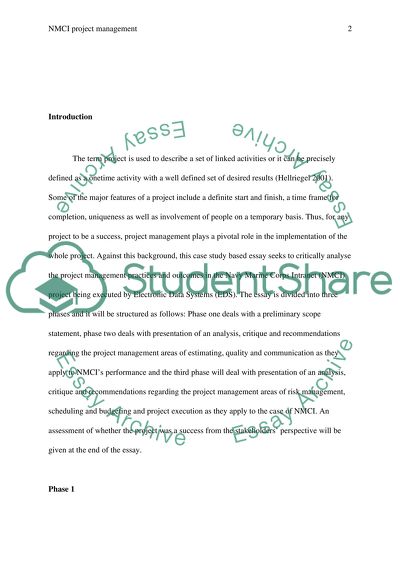Cite this document
(“Case Study of the Navy Marine Corps Intranet project (NMCI) project Essay”, n.d.)
Retrieved from https://studentshare.org/environmental-studies/1408562-case-study-of-the-navy-marine-corps-intranet
Retrieved from https://studentshare.org/environmental-studies/1408562-case-study-of-the-navy-marine-corps-intranet
(Case Study of the Navy Marine Corps Intranet Project (NMCI) Project Essay)
https://studentshare.org/environmental-studies/1408562-case-study-of-the-navy-marine-corps-intranet.
https://studentshare.org/environmental-studies/1408562-case-study-of-the-navy-marine-corps-intranet.
“Case Study of the Navy Marine Corps Intranet Project (NMCI) Project Essay”, n.d. https://studentshare.org/environmental-studies/1408562-case-study-of-the-navy-marine-corps-intranet.


